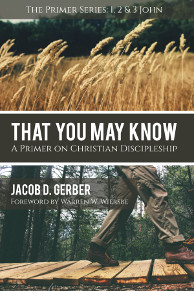Bible Readings for March 26th
Exodus 37 | John 16 | Proverbs 13 | Ephesians 6
In Exodus 37, we read about the construction of four pieces of furniture for the tabernacle: the ark of the covenant, the table, the lampstand, and the altar of incense. Today, we will explore the significance of the first three of these pieces of furniture. (For more on the altar of incense, see the meditation from Exodus 30.)
The ark of the covenant featured a cover called the mercy seat (Ex. 37:6) on which two golden cherubim sat. For this reason, the ark of the covenant was the place where Yahweh was “enthroned upon the cherubim” (Ps. 80:1, 99:1) in his throne room on earth, the Holy of Holies.
Allen Ross points out that the ark of the covenant is both the place where the blood of sacrificial death was sprinkled on the lid to propitiate for the sins of Israel (Lev. 16:14) and also a symbol of life, since we read in Hebrews 9:3–4 that the ark contained tablets of the law (the way of life), a container of manna (God’s provision of life in the wilderness), and Aaron’s budded staff (a symbol of new life).1 So, Ross writes, “In the New Testament fulfillment of these things, Paul declares that God sent his Son to be the propitiation for our sins, so that through faith in his blood we might have the remission of sins (Rom. 3:25) and new life in him (5:17–19).”2
The table was the place where the priests would regularly place the bread of the Presence before Yahweh (Ex. 25:30), and it functions similarly to the lampstand, which was also to be lit regularly (Lev. 24:3). By laying out the showbread every Sabbath day (Lev. 24:8), the people of Israel acknowledged that God was the source of their physical (and spiritual) provision, and by lighting the lampstand regularly, Israel acknowledged that God was their source of light (and truth).
Jesus very deliberately, then, claims to be both the bread of God sent down from heaven (John 6:22–59) as well as the true light who has come into the world (John 1:9, 8:12). We come together to worship each week, recognizing that only Jesus can satisfy our hunger and quench our thirst. Furthermore, we listen intently to his word, recognizing that Jesus is the truth of God in the world (John 14:6).
The worship of the old covenant was true and good, but it was temporary and incomplete. None of the furniture of the tabernacle was sufficiently powerful to save anyone, but it accomplished a critical function by pointing forward to the One who would be powerful in himself to save the world.
Our study of the tabernacle should both deepen our worship of Jesus and make us all the more thankful that Jesus accomplished for us what the tabernacle could not.
1 Allen P. Ross, Recalling the Hope of Glory: Biblical Worship from the Garden to the New Creation (Grand Rapids, MI: Kregel, 2006), 195.
2 Ibid.
Podcast: Play in new window | Download (5.2MB) | Embed
Subscribe: Apple Podcasts | RSS | More

Scripture quotations are from The Holy Bible, English Standard Version copyright © 2001 by Crossway Bibles, a division of Good News Publishers. Used by permission. All rights reserved.


